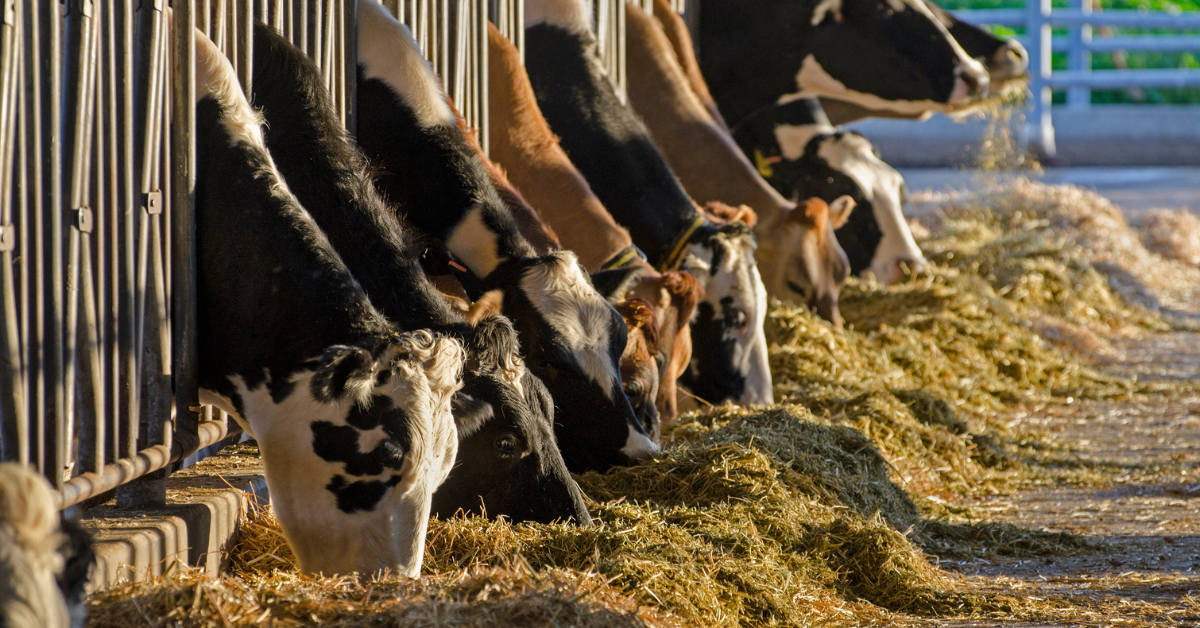Biosurfactant Applications: What are Biosurfactants?
Biosurfactants are organic compounds produced by microorganisms. These versatile molecules possess unique surface-active properties, making them invaluable across a spectrum of industries. Unlike their synthetic or chemical surfactant counterparts, biosurfactants are biodegradable, environmentally friendly and exhibit extremely low toxicity. These bio-based agents are ushering in a new era of industry-wide eco-innovation in areas including:
- Agriculture
- Animal Nutrition
- Oil and Gas
- Mining
- Industrial Products
- Consumer Products
- Health and Wellness
Below is a summary of the wide-ranging applications of biosurfactants in these industries, showcasing their effectiveness in addressing a multitude of challenges and optimizing vital processes. Biosurfactants also have cross-industry potential to positively impact numerous sectors and promote sustainable practices.
Biosurfactant Applications: Industry Overviews
1. Agriculture
A combination of surface, antibacterial, antifungal, antiviral and emulsifying activities makes biosurfactants a universal solution for many agriculture problems and processes, including:
- Penetrate Compacted Soils: Enable water to be distributed more freely
- Promote Root Growth: Allow roots to penetrate soil for better growth, which enhances input uptake
- Increase Yields: Less compacted soils and enhanced root growth drives improved crop productivity
Solutions for Climate Change and Pollution Problems
By revitalizing individual fields, biosurfactants (and their microbial counterparts) play a pivotal role in reinstating the natural equilibrium of our planet. Many benefits may be realized by treating plants with microbial strains, including:
- Carbon sequestration and reduction of atmospheric carbon dioxide
- Increased food production
- Reduced runoff and water concerns
- Enhanced fertilizer efficiency
2. Animal Nutrition
Biosurfactants address crucial aspects of animal hygiene, food additives and facility cleanliness. Their surface, antibacterial, antifungal and antiviral activities uniquely position biosurfactants to enhance animal health and productivity in both livestock and companion animal applications.
In livestock uses, biosurfactants and their microbial counterparts can also address environmental concerns. One example is their ability to reduce the amount of methane released from cows through special diets. This is important, as methane gas is one of the major contributors to global warming and dangerous ground-level ozone formation.
Here are potential ways biosurfactants can contribute to the field of animal nutrition and health:
- Antibacterial/antiviral/antifungal treatment of animals and facilities
- Enhanced adsorption of nutrients from food
- Anti-nematode treatment
- Immune modulation
- Treatment of animals’ fur and wool
- Sanitation
- Treatment of pastures and animal feed to inhibit methanogenic bacteria and methane production
3. Oil and Gas
Surfactants are the cornerstone of most chemical additives used in the oil and gas industry – from drilling and completions fluids to production chemicals. These oilfield surfactants have been historically sourced from non-renewable, petroleum-based materials. However, the current landscape requires more complex approaches for reservoirs with lower porosity, lower permeability, higher temperatures and greater pressures. Simultaneously, the industry faces global pressures to meet growing energy demands using less resources and more sustainable means.
Enter biosurfactants. Operators are increasingly using biosurfactants to meet these challenges because they are proven to be cost-effective and highly efficient in the oilfield, typically outperforming traditional synthetic surfactants. Biosurfactant technology improves production and operational efficacy using their current assets – with little to no change in existing chemical programs – in applications such as:
Upstream
- Acidizing treatments
- Enhanced oil recovery
- Hydrate inhibitor
- Hydraulic fracturing
- Oil viscosity reduction
- Production enhancement
- Wellbore flow assurance (paraffin/asphaltene dispersal and deposit control)
Midstream
- Cleaning of transportation and storage facilities (barges, storage tanks)
- Friction reducer cleaner
- Hydrocarbon remediation (pipeline cleaners)
- Pipeline flow assurance
- Saltwater disposal
- Water treatment
Downstream
- Crude oil desalter
- Demulsifier
- Diesel cold flow improvers
- Engine oil emulsifier and stabilizer
- Fuel additives
- Marine fuel anti-sludge
- Water treatment
4. Mining
Biosurfactant additives can extract metals and minerals that traditional synthetic reagents can’t reach, including from low-grade ores. These ESG-friendly reagents easily integrate into existing mining operations to immediately boost mineral recovery, selectivity and productivity using substantially less energy.
This is due to the unique characteristics and functionality of biosurfactants:
- Adsorption-desorption that can extend performance
- Small micelle size penetrates nanopores
- Maintain stability in acids and alkalis
- Remain active in extreme pH and salinity conditions
- Boost acid performance, reducing concentration of toxic chemicals
Potential applications of biosurfactants in mining include:
- Dewatering aids
- Dust suppression
- Flotation
- Flocculation
- Filtration
- Foaming control
- Freeze control
- Grinding aids
- Leaching
- Tailings management
- Water treatment
5. Industrial Ingredients
Similar to other applications, a combination of surface, antimicrobial, detergent and emulsifying activities allows biosurfactants to enhance performance in many industrial markets and products. This includes use in formulations for:
- Agricultural Adjuvants
- Coatings, Adhesives, Sealants and Elastomers (CASE)
- Construction
- Industrial and Institutional Cleaning (I&I)
- Metalworking Fluids (MWF)
- Paints and coatings
- Pulp and paper
- Textiles and Leather
- Water Treatment Solutions
Biosurfactants can reduce carbon intensity, minimize aquatic toxicity and offer lower usage rates, all while enhancing performance and overall product sustainability profile in these industrial applications.
6. Consumer Products and Brands
Biosurfactants can solve key pain points in personal care and home care product formulations. They are 100% bio-based alternatives to traditional petrochemical surfactants and other types of partially bio-based surfactants. This includes chemical surfactants being banned by regulatory agencies.
Beyond the conventional realm of products on our shelves, biosurfactants enable new formulations that boast sustainability and performance.
Personal Care Ingredients
Biosurfactant ingredients have a wide range of unique properties that make them ideal for use in almost every personal care product:
- Act as emulsifiers, increasing water mobility in the skin to reduce inflammatory processes and stimulate healthy cell growth and skin activity
- Minimize irritation and skin damage that may be caused by legacy surfactants, create a barrier to protect from external stressors and enhance its ability to retain moisture
- Increase the absorbance of other active ingredients by skin and hair
- Do not require amphoteric co-surfactants such as betaines
- Have a high degree of synergy with cellulosic additives, like xanthan gum, to produce viscosity and rheologies similar to traditional salt-thickened formulations
Examples of personal care products include:
- Anti-aging, skin moisturizing creams, lotions and emollients
- Body wash, facial cleansers and hand sanitizers
- Cosmetics and makeup removers
- Medicated treatments for skin conditions like eczema or psoriasis
- Oral care products
- Shampoo and conditioner
- Sunscreen
Home Care Ingredients
Biosurfactants can advance home care cleaning by acting as:
- Degreasers
- Foaming or defoaming agents
- Detergents
- Multifunctional emulsifiers
- Odor preventers
- Porous surface cleaning boosters
- Sanitizers
They have the ability to increase the effectiveness of cleaning chemicals by allowing for better penetration into environmental surfaces. Types of home cleaning products that can benefit by reformulation with biosurfactants include:
- Carwash
- Power wash
- Glass cleaners
- Dishwashing and laundry detergents
- Stainless steel cleaners
- Tub and tile cleaners
- Carpet shampoo
7. Health and Wellness
In the pursuit of holistic well-being, biosurfactants offer a myriad of benefits that transcend traditional approaches to wellness. From enhancing nutrient absorption and cellular hydration to promoting cardiovascular health and optimizing pharmaceutical intake, biosurfactants play a transformative role in elevating the overall quality of life.
Biosurfactants ability to improve bioavailability, micelle size, absorption and water mobility while reducing surface tension means they have potential to:
- Improve the solubility of food and absorption of medications and supplements
- Increase hydration potential of ingested water and other beverages
- Increase the expulsion of waste products
- Reduce biofilms and adhesion factors of potentially pathogenic bacteria
It’s possible that biosurfactants may be able to be used in a variety of health and wellness applications, including:
- Food and beverage
- Food preservatives and emulsifiers
- Packaging
- Rehydrating drinks
- Pharmaceuticals
- Antibiotics
- Antifungals
- Antihypertensives
- Heart medications
- Chemotherapy drugs
- Inhaled drugs and compounds
- Vitamins, minerals and supplements (lycopene, CoQ10, turmeric, curcumin, etc.)
Locus FS: A Leader in Biosurfactant Applications and Research
Locus Fermentation Solutions, a US-based green tech company, has quickly become a global leader in biosurfactant production, research and commercialization. The company has over 1,400 patent filings for biosurfactant applications in all of the above industries, with the team consistently uncovering new uses. The company’s focus on research and innovation cements its position as a key player that’s driving the evolution of biosurfactant technology.
What makes the company unique is that it high-performance, specialty chemical formulations enhanced with novel glycolipids, a type of biosurfactant. Built on deep microbial expertise, the company uses these biosurfactants as powerful additives that push formulation performance beyond the limits of traditional chemistry across industrial, CPG, energy, mining and agricultural applications. Locus FS’ proprietary biomanufacturing platform helps customers solve complex formulation challenges and accelerate the transition to smarter, more sustainable biosurfactant-based solutions.
Conclusion
The expansive applications of biosurfactants have illuminated a path toward sustainable innovation across various sectors. From agriculture to consumer brands, these 100% bio-based ingredients have showcased their remarkable versatility, offering eco-friendly solutions to some of the most pressing challenges of our time. As we’ve explored their role in enhancing agricultural practices, addressing animal well-being, and revolutionizing wellness and consumer goods, it becomes evident that biosurfactants are not just agents of change; they are catalysts for a greener, healthier future.
READ MORE: Biosurfactants: What Are They?
Biosurfactants or amphiphilic compounds are a diverse group of molecules which consist of a polar (hydrophilic) head and a nonpolar (hydrophobic) tail. This unique structure makes these compounds surface (interfacial) tension reducers, which is why they are called biosurfactants (biological surface active agents). Surface tension can be defined as the property of the surface of a liquid that allows it to resist an external force, due to the cohesive nature of the water molecules.






